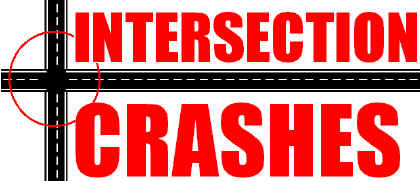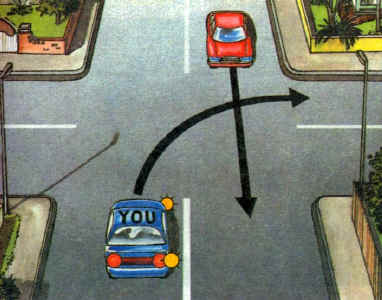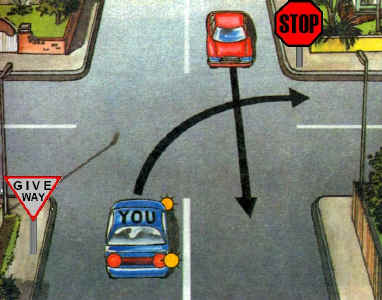Chapter 36:
The majority of serious crashes in built-up areas occur at controlled intersections.
In all cases someone has ignored traffic signs or signals.
It is a modern form of russian roulette the drivers that continue through intersections without reducing speed just because the road rules are on their side.
A defensive driver drives like everyone is out to get them. Because if you don’t they will get you.
Approaching a stale green traffic light, that is a light that has been green for a long time, check your mirrors and see who is around you. If a vehicle is following too close, and the lights change to orange, don’t stop. On an orange or amber light you must stop but only if it is safe to do so.
As you are about to enter any intersection, scan right and left checking for oncoming traffic and cover the brakes, just in case. Even when waiting at the traffic lights, check right then left for the red light runner from hell.
An intersection provides the added risk of vehicles approaching from opposite directions that cross paths and as such could make side impact. In a side impact you have very little protection.
In this diagram the red car has right of way since it is travelling straight through and the blue car is attempting to cross its path. The red car through should exercise extreme caution and not trust the other driver.
In this diagram the intersection is controlled by a STOP and GIVE-WAY sign (in reality the STOP sign would face the other way). Assuming both cars are stationary, which car has the legal right of way?
The answer is the red car. Since a STOP sign is really just a GIVE-WAY sign at which you must stop. Once stopped the STOP sign has the same power as the GIVE-WAY sign, both signs therefore cancel each other out. The red car should proceed first.
The only way the blue car could go first is if the red car is still approaching the intersection.
If you encounter such a situation and are unsure of the road law, POLITE hand signals between drivers may get you through the situation without conflict.
(Written by Joel Neilsen, Managing Director, Safe Drive Training)




